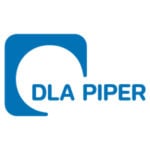-
What forms of security can be granted over immovable and movable property? What formalities are required and what is the impact if such formalities are not complied with?
It is important to note that under German law, security rights can only be created for single assets or asset groups, which need to be determined specifically, not over all assets of a certain person/ legal entity. German law does not know floating or fixed charges. This general rule becomes in particular important if security rights shall encumber certain groups of assets (such as certain movable assets or certain groups of claims). The precise description of the respective assets is an important condition for the creation of a valid security right.
Further, German law generally distinguishes between personal security (Personalsicherheiten) and in rem security (Realsicherheiten). Personal security provides the secured party with a contractual claim, particularly against a third party. In rem security grants the secured party a right in rem over a certain (immovable or movable) asset.
Within the category of in rem security, the type of asset or asset class determines the applicable security instrument and the requirements for legal perfection of the respective right in rem:
a) Real estate
Security over real estate (full ownership in a certain immovable property or heritable building rights) is typically created by way of a land charge (Grundschuld). A land charge provides a so-called non-accessory security right. The land charge beneficiary and the owner of the secured claim do not necessarily need to be identical. In syndicated loan structures, the agent can thus hold the collateral on behalf of all lenders who are owners of the secured claims.
A land charge can be created by the debtor of the secured claim but also by a third party. It can be created as a certificated land charge (Briefgrundschuld) or as a non-certificated land charge (Buchgrundschuld).
Both types of land charges require the landowner or owner of a heritable building right to sign a land charge deed (including, inter alia, the creation of the land charge to the benefit of a certain person/entity and the required applications for registration with the land registry) in front of a notary so that the notary can review the identity of the person(s) signing and can certify the signature(s). Further, in case of corporate entities, the notary will check and confirm the representation power of the signing person(s). In cross-border cases, foreign notaries could generally also be involved. In such cases, it however needs to be reviewed whether an apostille is required in addition, verifying that the foreign notary’s power is comparable to a German notary. Further, the respective application for the registration of the land charge with the land registry in Germany needs to be done by a German notary. Therefore, it is generally recommendable to execute the land charge deed in front of a German notary and, if required, to act with a power of attorney.
In addition to the execution of the land charge deed, an effective creation of a certificated land charge requires registration in the land register (Grundbuch) and the issuance and handover of a land charge certificate (Grundschuldbrief) to the land charge beneficiary. In the case of non-certificated land charges, registration in the land register alone is sufficient. If and as long as these conditions are not all fulfilled, no effective land charge exists.
One benefit of a certificated land charge is that it can be transferred to another party just by execution of an assignment deed (with signatures to be certified by a notary) and handover of the original land charge certificate. The registration of the respective change of the beneficiary in the land registry is no precondition for an effective transfer but can occur later on. In case of a non-certificated land charge, the entry of the new beneficiary in the land registry is a precondition for a valid transfer.
Land charge deeds typically also include a clause entitling the beneficiary to immediate enforcement into the encumbered property (either for the full land charge amount or a partial amount). In such case, the creation of the land charge requires a fully notarized deed, a certified (notarized) signature alone is not sufficient. This often represents an important cost factor to be taken into account when agreeing on the security instrument. Furthermore, in some cases, the landowner also assumes personal liability in the nominal land charge amount and submits itself to immediate enforcement into all its assets with regard to this claim (i.e. not only into the encumbered property). This gives the beneficiary of this additional claim an enforceable title allowing enforcement into the landowner’s entire estate. Such submission into immediate enforcement also requires a fully notarized deed.
German law also knows mortgages (Hypotheken) as security rights covering real properties. However, as the mortgage is a so-called accessory security instrument, it depends on the existence of the underlying secured claim(s) and its legal situation generally follows the secured claim(s). It can only be created in favor of the owner of the secured claim(s). As such, it is practically irrelevant in German lending practice.
b) Movable assets
Security over movable assets can be created either by granting a security pledge (Pfandrecht) or by way of a security transfer of title in the asset (Sicherungsübereignung).
In addition to a respective agreement agreeing on the creation of a pledge over a certain movable asset, a security pledge requires the pledged asset to be delivered physically to the pledgee. Since this is generally not in the interest of the parties and also difficult to execute in practice, security pledges over movable assets are generally not used in German (credit) security practice.
Far more important in Germany is the security transfer of the legal title in the asset. Here, the security provider and owner of the asset(s) agrees on a security transfer of the legal title in the respective asset(s) to the creditor. The necessary precise description of the respective movable assets can be done either by way of reference to production numbers, purchase agreements containing the details or alike or by way of a global security transfer covering all movable assets of the grantor of the security in a certain building or room of a building (precisely described, e.g. by way of adding a site map and marking the asset location; so-called Raumsicherungsübereignung). The physical delivery of the asset, which would generally also be necessary for a valid transfer of title, is substituted by a further agreement of the parties leaving the possession with the security provider (Besitzmittlungsverhältnis). Within this structure, the security provider can continue to use it in the course of its business.
Unlike pledges, the security transfer of title in a movable asset is not separately dealt with in German statutory law. Generally, the rules of a full title transfer apply. The specific link between the secured claim and the transfer of title and the relating limitations for the beneficiary resulting from the fact that it is a security transfer only, are established by security purpose arrangements in the underlying security transfer agreement. They set out, inter alia, the secured claims and under what conditions the title in the asset must be re-transferred.
c) Receivables and other contractual claims
Security over receivables and other claims can be created either by granting a security pledge (Pfandrecht) or by way of a security assignment (Sicherungsabtretung) of the respective receivables and/or contractual claims.
In the case of a pledge over receivables, a valid security interest requires not only an agreement between the parties, but also notification of the third-party debtor of the pledge. This form of collateral is commonly used in relation to bank accounts and further claims against the account-holding bank.
A valid security assignment only requires a respective agreement between the grantor of the security (the owner of the claim(s)) and the beneficiary. Such agreement can cover existing single claims or a certain class of claims (like rental agreements relating to a certain real property), including future claims. In the latter case of a so-called revolving security, the precise description of the assigned claims again needs special attention in order to ensure a valid assignment.
As long as the third-party debtor is not notified of the security assignment, it can still pay with releasing effect to its contractual counterparty. Therefore, it is rather common to agree on so-called “open” security assignments if single claims (or a limited number of claims) are assigned. In such case, notice of the assignment(s) is given to the third-party debtor at the time the security right is created. If the assignment shall not be revealed (e.g. if the financing shall not be revealed) or if such notification is unpractical in view of the variety of claims in a revolving security assignment structure, so-called “silent” assignments are agreed upon. Here, notifications typically only occur upon or close to enforcement scenarios. In the latter case, it is important for the assignee to get (i) a clear authorization to do such notification itself if necessary or appropriate and (ii) updated lists of the claims, third party debtors and their contact details in regular intervals.
d) Shares in legal entities and IP rights
Generally speaking, security rights over shares in legal entities and covering IP rights are created as set out under c) for receivables and other claims. There are some special rules for certain stock and IP rights which follow the rules for movable assets. It would however be beyond the scope of this overview to go into details regarding all these specialties.
In addition, it is worth noting that a pledge as well as security assignments of shares in German limited liability companies (GmbH) require the execution of a fully notarized deed in order to be effective.
-
What practical issues do secured creditors face in enforcing their security package (e.g. timing issues, requirement for court involvement) in out-of-court and/or insolvency proceedings?
Secured creditors may face a variety of issues and need to take care of formal requirements when seeking to enforce one or more elements of their security package.
a) Enforcement outside insolvency proceedings
The enforcement procedure largely depends on the type of collateral involved and the agreements individually negotiated between the parties.
- Land charges (and mortgages) are typically enforced through judicial foreclosure proceedings, either by way of a foreclosure (Zwangsvollstreckung) (leading to a public auction of the real estate) or through compulsory administration (Zwangsverwaltung) (whereby the proceeds from the use, e.g. rental income, are collected by a trustee and – after deduction of costs – submitted to the secured creditor). Such enforcement has to be applied with and is executed under the control of the foreclosure court. With the cooperation of the landowner and, where applicable, subordinated secured creditors, enforcement may also take place by way of a private sale of the real property. It needs to be noted, though, that the land charge beneficiary can neither appropriate the real property itself nor sell it in a private sale without the consent of the landowner which needs to be granted after the land charge became enforceable. A consent granted in connection with the establishment of the land charge would not be sufficient.
- Security assignments of receivables or other claims are generally enforced either by collection or sale of the claims. In case of enforcement by collection, the debtor’s authority to collect the receivable – usually granted as part of the arrangement – must first be revoked, followed by a notification of the assignment to the third-party debtor (if such notification did not yet take place beforehand) and a request to the third party to pay to the secured party.
- Security transfers of title in movable assets are enforced in accordance with the terms of the security agreement and statutory law. Typically, the agreements stipulate that, upon occurrence of an enforcement event, the creditor may demand surrender of the asset. The creditor must then realize the asset through a private sale or public auction. Prior to enforcement, the creditor will need to – if contractually provided – revoke the security provider’s right to use and dispose of the asset. Again, it is important to note that under German law, the secured party does not automatically become the owner of the asset in an enforcement scenario and cannot simply appropriate it. Any transfer of full title to the secured party requires a valid consent of the security provider to be granted after the security became enforceable. A consent granted in connection with the establishment of the security would not be sufficient.
- Share pledges are commonly realized by means of a public auction conducted by a notary, if the security documents allow such enforcement. Alternatively, a court-led (time-consuming) public auction is possible as well. A private sale of the pledged shares is only permissible with the debtor’s consent – again to be granted after the security became enforceable. A consent granted in connection with the establishment of the security would not be sufficient.
b) Enforcement within insolvency proceedings
After a petition for the opening of insolvency proceedings is filed, the insolvency court may – and will in most cases – order a stay of individual enforcement measures. A similar stay may also be ordered in court-led restructuring proceedings upon a respective application.
Upon the opening of insolvency proceedings over the debtor’s/ security provider’s assets, individual enforcement measures by creditors are generally prohibited and the right to realize the collateral follows specific insolvency law rules. According to these rules, the insolvency administrator may realize a movable asset in his or her possession, even if it is encumbered with a security right. The security right however gives the secured creditor a right to separate satisfaction and the proceeds of the realization will – after deduction of the costs of determination and realization (usually 9%) be distributed to the secured creditor. In the same way, the insolvency administrator may collect or in another way realize a claim assigned by the debtor for security purposes but will need to surrender the proceeds after deduction of costs to the secured creditor.
There is a legal dispute whether such right of the insolvency administrator also exists in case of security rights created in the form of pledges over shares or IP rights.
In case of land charges (and mortgages), the secured creditor generally retains the right to initiate foreclosure (Zwangsvollstreckung) or compulsory administration (Zwangsverwaltung) proceedings. In practice, however, the secured creditor usually enters into a realization agreement with the insolvency administrator according to which the insolvency administrator undertakes the compulsory administration on behalf of the secured creditors and/or sells the real estate by way of a private sale against a certain percentage of the proceeds to be paid to the insolvency estate (and the remaining proceedings to be surrendered to the secured creditor against a release of the land charge).
-
What restructuring and rescue procedures are available in the jurisdiction, what are the entry requirements and how is a restructuring plan approved and implemented? Does management continue to operate the business and / or is the debtor subject to supervision? What roles do the court and other stakeholders play?
In particular, the German Act on the Stabilization and Restructuring Framework for Businesses (Unternehmensstabilisierungs- und -restrukturierungsgesetz – StaRUG), which implemented Directive (EU) 2019/1023 of the European Parliament on preventive restructuring frameworks, provides a preventive restructuring framework that enables a company to undertake restructuring efforts outside formal insolvency proceedings.
To be eligible, the debtor must be imminently illiquid (drohend zahlungsunfähig) without being subject to a mandatory insolvency filing obligation (i.e., no current illiquidity (Zahlungsunfähigkeit) or over-indebtedness (Überschuldung) exists). A debtor is deemed imminently illiquid if it is likely to become illiquid within (in general) the next 24 months, unless appropriate remedial measures are taken.
The StaRUG is intended to enable out-of-court restructurings, the publicity of which in principle means that only parties involved in the proceedings will be made aware of them. For this reason, there are no formal requirements for the commencement of restructuring negotiations and the preparation of the restructuring plan. There is also no general publication of the proceedings. Under certain circumstances, however, the debtor must notify the competent court of his restructuring plan. This is the case if he plans one of the following measures:
- judicial preliminary examination of the plan;
- judicial voting procedure;
- confirmation of the restructuring plan by the court (which is mandatory, for example, in the case of a cross-class cram-down);
- stabilization orders (stay of execution and/or realization).
In these cases, too, disclosure is made only to the parties involved in the proceedings, i.e. the creditors included in the proceedings.
At the core of the StaRUG regime is the restructuring plan, which allows for a flexible reorganization of the debtor’s legal relationships with certain of its creditors. This may include, for example, a haircut on financial liabilities, and other adjustments of existing loan claims and collateral granted therefore. The framework provides a modular system that allows the debtor to choose the instruments needed for its specific restructuring situation.
Once prepared, the restructuring plan is submitted for approval to the affected parties.
For the purpose of voting on the restructuring plan, the parties to be included in the plan are divided into groups of affected parties with the same legal status. As a general rule, these are:
- creditors with security interests;
- unsecured creditors;
- creditors whose claims would be subordinated in insolvency proceedings (e.g. creditors of a shareholder loan of a limited liability company; see section 39 para. 1 no. 5 German Insolvency Code (InsO)); and
- shareholders.
Affected parties within the same group must generally be treated equally in the restructuring plan. Furthermore, the selection of the parties to be included must not be arbitrary, but must be justified by the specific restructuring concept.
Acceptance of the restructuring plan generally requires acceptance by each group with at least 75% of the voting rights.
Dissenting creditor groups can, however, be outvoted (so-called “cross-class cram-down”), if:
- the affected parties are not worse off as a result of the plan than they would be without the plan,
- they receive a fair share of the economic value of the restructuring, and
- the majority of the groups have agreed to the plan (in the case of only two groups, it can even be sufficient if only one group agrees).
The restructuring procedure pursuant to the StaRUG is designed as a proceeding in which the debtor retains its autonomy. In principle, therefore, the debtor’s management controls the restructuring plan proceedings and retains control over the company. However, for non-consensual restructurings, the StaRUG provides for the involvement of a restructuring officer as an independent supervising and mediation body by court order. The restructuring court must appoint a restructuring officer (apart from exceptional cases) in particular if consumers, micro, small or medium-sized enterprises are involved, stabilization orders are issued or it is foreseeable that the plan will only be enforceable against the resistance of individual parties affected by the plan. The scope of the control and participation powers conferred on the restructuring officer is at the discretion of the court. In particular, the court may also entrust the restructuring officer with certain examination tasks as an expert.
For restructurings within formal insolvency proceedings, please refer to section 8.
-
Can a debtor in restructuring proceedings obtain new financing and are any special priorities afforded to such financing (if available)?
The restructuring plan may also provide for new financing commitments and their collateralization, if these are necessary for the success of the restructuring. The respective provisions of a restructuring plan and the legal acts taken to execute it until a “sustainable restructuring” shall be exempt (apart from exceptional cases) from claw-back claims in a later insolvency. However, only the disbursement of the new loan(s) and collateralization of a loan, but not its repayment, shall be exempt from claw-back claims. The debt repayment is therefore not privileged in any subsequent insolvency proceedings.
It should be noted, tough, that the privilege shall not apply to subordinated shareholder loans and their collateralization. Also, a claw-back remains possible if the debtor intentionally provided false information and the creditor was aware of this at the time the financing was granted.
Furthermore, (external) financiers shall only be protected by the claw-back privilege against a failure of the planned restructuring concept that, contrary to expectations, leads to insolvency. If, on the other hand, the insolvency of the debtor occurs at a later point in time, independently of the restructuring project, and thus only after a “sustainable restructuring” had been achieved, the protection against claw-back claims no longer applies.
In addition, other legal risks that exist in connection with restructuring financing outside of a restructuring plan are also mitigated. For example, legal transactions undertaken with knowledge of a restructuring plan are not regarded as unlawful assistance in delaying an insolvency. There is a legal dispute, however, as to whether this presumption of legality only applies if a restructuring opinion is available that complies with the standards developed by the German Federal Supreme Court for pre-insolvency restructuring outside court-supervised proceedings.
-
Can a restructuring proceeding release claims against non-debtor parties (e.g. guarantees granted by parent entities, claims against directors of the debtor), and, if so, in what circumstances?
In German restructurings, third party releases are only possible under very limited circumstances. A restructuring plan within StaRUG proceedings can cover collateral granted by third parties – such as guarantees issued by parent entities or co-debtor obligations or collateral granted by affiliated companies). However, such inclusion is only permissible if the third-party obligor consents and if the third-party security or obligation originates from an entity affiliated with the debtor within the meaning of Section 15 of the German Stock Corporation Act (AktG). In addition, an appropriate compensation must be provided to the beneficiary of the security in exchange for releasing the security or limiting it as part of the restructuring plan.
Releasing other third parties from liabilities (e.g. the management) is not possible by way of an restructuring plan. Any such releases require a consensual agreement with all parties involved, i.e. a consensual waiver of rights by the respective beneficiary.
-
How do creditors organize themselves in these proceedings? Are advisory fees covered by the debtor and to what extent?
Creditors may organize themselves within the restructuring proceedings by forming a creditors’ committee (Gläubigerbeirat) pursuant to Section 93 StaRUG, particularly where claims of all creditors are to be included in the restructuring. Additionally, creditors may – and usually do – organize themselves informally in ad hoc groups outside the formal restructuring framework, especially in scenarios where creditors initiate or drive the restructuring process themselves.
Advisory fees incurred by creditors can be covered by the debtor, provided, however, there is an agreement to that effect – in the existing financing documentation or a new agreement.
-
What is the test for insolvency? Is there any obligation on directors or officers of the debtor to open insolvency proceedings upon the debtor becoming distressed or insolvent? Are there any consequences for failure to do so?
Under German law, there are three statutory grounds for insolvency in case of legal entities with limited liabilities for shareholders:
- Illiquidity pursuant to section 17 InsO;
- Over-indebtedness pursuant to section 19 InsO; and
- Imminent illiquidity pursuant to section 18 InsO (which is also relevant for preventive restructuring under the StaRUG framework, see Section 3 above).
Illiquidity and over-indebtedness are mandatory grounds for opening insolvency proceedings.
A debtor is generally considered illiquid if it is unable to meet its due payment obligations. This is determined by comparing the debtor’s available liquid assets with its due liabilities.
According to the German Federal Supreme Court, illiquidity generally exists if the debtor is unable to cover at least 90% of its due obligations and this liquidity gap cannot be eliminated within the next three weeks (taking into consideration the new due claims as well as the available liquid assets within these three week period). There are, however, exceptions to this rule.
Over-indebtedness generally arises when the debtor’s assets no longer cover its existing liabilities, unless the continuation of the company’s business is predominantly likely over the next 12 months (so-called positive going concern prognosis – Fortbestehensprognose). If a positive going concern prognosis cannot be (longer) assumed, the debtor must prepare specific over-indebtedness balance sheets. These balance sheets must reflect liquidation values for the assets and include according liabilities as they would arise in a liquidation scenario (running-down/winding-up costs). In case of a negative equity based on these over-indebtedness balance sheets, the company is balance-sheet insolvent in the legal sense.
By contrast, imminent illiquidity allows – but does not oblige – the debtor’s management to initiate insolvency proceedings. It is defined as the likely inability to meet payment obligations within (in general) the next 24 months (see Section 3).
Where a mandatory insolvency ground (illiquidity or over-indebtedness) exists, the company’s management is legally obliged to file for insolvency without undue delay. Such filing can be postponed up to
- 3 weeks in the case of illiquidity, and/or
- 6 weeks in the case of over-indebtedness,
if and as long as there are reasonable grounds to believe that the respective insolvency reason can be ruled out within the respectively applicable period. If this is (no longer) the case, a filing has to take place immediately.
Failure to comply with this duty exposes managing directors to personal unlimited liability for damages caused by the delay. Generally speaking, the directors are personally liable for any payments rendered whilst the company was insolvent. Certain exceptions exist for payments necessary for the continuation of the business and depending on the status of the company (i.e. is the above filing period still running or not). It needs to be reviewed in each case in detail if a certain payment is still allowed under these rules.
Moreover, delaying an insolvency filing constitutes a criminal offence, punishable by up to three years’ imprisonment or a monetary fine. In addition, the convicted managing director is banned from taking management positions for 5 years. Further criminal liabilities may arise due to the entering into new contracts or when benefiting certain creditors or transferring assets in a status of insolvency.
-
What insolvency proceedings are available in the jurisdiction? Does management continue to operate the business and / or is the debtor subject to supervision? What roles do the court and other stakeholders play? How long does the process usually take to complete?
German law generally offers two primary types of insolvency proceedings: regular insolvency proceedings (reguläres Insolvenzverfahren) and debtor-in-possession insolvency proceedings (Insolvenzverfahren in Eigenverwaltung). A special form of the latter is the protective shield proceeding (Schutzschirmverfahren). In all proceedings, the goal can be to restructure the debtor entity by way of an insolvency plan, to transfer the viable assets to a new investor by way of an asset deal or to liquidate the debtor.
Regular Insolvency Proceedings
Upon an insolvency filing, the insolvency court generally initiates so-called preliminary insolvency proceedings (vorläufiges Insolvenzverfahren). In most cases, a so-called “weak” preliminary insolvency administrator is appointed to assess the debtor’s financial situation and to review whether an insolvency reason exists and whether there are sufficient funds to cover the costs of the insolvency proceeding. During this phase, management usually retains operational control, but major decisions require the administrator’s consent. Less commonly, the court may appoint a so-called “strong” preliminary administrator who assumes full control of the business. The court also usually orders a stay of enforcement proceedings by individual creditors.
Once formal insolvency proceedings are opened by court order, the court appoints an insolvency administrator who takes over the management and administration of the debtor. The primary goal in regular proceedings is often liquidation through asset sales or the sale of the business as a going concern. However, a turnaround of the debtor’s business operations and restructuring by way of an insolvency plan remains possible under the administrator’s control.
Debtor-in-Possession Proceedings
In debtor-in-possession proceedings, the debtor’s management retains control over the business under the supervision of a court-appointed custodian (Sachwalter). The custodian’s role is primarily supervisory, including oversight of financial matters and monitoring of business decisions. The focus in and goal of these proceedings is usually the restructuring and continuation of the business. The debtor typically prepares and proposes an insolvency plan, which aims to restructure and discharge the company’s liabilities. Creditors are divided into classes, and the plan requires majority approval in each class. Even if one or more classes reject the plan, it can still be confirmed under a “cross-class cram-down”, provided that:
- the majority of classes vote in favor of the plan;
- dissenting classes are not worse off than they would be without the plan; and
- dissenting classes are adequately involved in the restructuring solution.
Alternatively to a restructuring of the debtor by way of an insolvency plan, a transfer the viable assets to a new investor by way of an asset deal is also commonly seen in debtor-in possession-proceedings.
Protective Shield Proceeding
This special type of debtor-in-possession proceeding is available to debtors who are not yet illiquid but imminently illiquid or over-indebted, and who are capable of being restructured. Upon a respective filing, the court grants a three-month period for the debtor to prepare and submit an insolvency plan. During this period, the court may also suspend enforcement actions. Although this proceeding is an insolvency proceeding, it is popular among debtors as such is more likely viewed as a restructuring proceeding in German public.
In some cases, insolvency proceedings are filed for as protective shield proceedings but are – upon the requests of the creditors – later changed to regular insolvency proceedings.
Duration
The duration of insolvency proceedings in Germany varies widely depending on the complexity and structure of the case. Typically, proceedings without an insolvency plan take several years to complete. If an insolvency plan is carefully prepared and pre-discussed with the main stakeholders already before the filing for insolvency, the proceedings can be completed much faster and usually do not last longer than one year (including the preliminary proceedings).
-
What form of stay or moratorium applies in insolvency proceedings against the continuation of legal proceedings or the enforcement of creditors’ claims? Does that stay or moratorium have extraterritorial effect? In what circumstances may creditors benefit from any exceptions to such stay or moratorium?
Under German insolvency law, legal proceedings are automatically stayed upon the opening of insolvency proceedings, regardless of whether the insolvency affects the claimant or the defendant. This automatic stay of proceedings remains in effect until the insolvency administrator decides to take over and continue the proceedings on behalf of the insolvent estate. Creditors are generally barred from continuing individual legal actions during the insolvency. However, exceptions exist, inter alia, where a creditor holds a preferential claim under German insolvency law (Masseforderung). Further, if filed insolvency claims are not admitted to the insolvency table, the respective creditor needs to file its claim by way of a declaratory action.
With respect to enforcement actions, they are generally also stayed upon commencement of insolvency proceedings. For details within the preliminary proceedings and upon the opening of insolvency proceedings, see the explanation under Section 2 above.
German insolvency law applies the principle of universality. According to Art. 19 EU Insolvency Regulation 2015/848 (“Regulation”) and section 335 InsO, if insolvency proceedings are opened in Germany, the German law governing the effects of insolvency proceedings on legal actions and enforcements would also apply in other countries/ to foreign assets. The respective foreign country would need to be reviewed in addition, if it recognizes this rule.
-
How do the creditors, and more generally any affected parties, proceed in such proceedings? What are the requirements and forms governing the adoption of any reorganisation plan (if any)?
Creditors play a central role in German insolvency proceedings. Upon the opening of insolvency proceedings, creditors may file their claims – arising before the commencement of the proceedings – for registration in the official insolvency table with the insolvency administrator or, in debtor-in-possession proceedings, with the insolvency custodian (Sachwalter). The court sets a deadline for claim registration, typically between two weeks and three months. Late filings are permitted but may incur (limited) additional costs due to the need for a separate court verification hearing.
The collective rights and duties of creditors are exercised through the creditors’ assembly (Gläubigerversammlung) and – if established – the creditors’ committee (Gläubigerausschuss).
Creditors’ Assembly
This is the primary decision-making body in insolvency proceedings. All creditors, the insolvency administrator, members of the creditors’ committee (if not creditors themselves), and the debtor are entitled to participate in the meetings of the creditors’ assembly. The court convenes the meetings.
The creditors’ assembly has the authority to:
- elect or replace the insolvency administrator,
- decide on the appointment and composition of the creditors’ committee,
- exercise information rights vis-à-vis the administrator,
- decide whether the business should be liquidated, continued temporarily, or restructured.
Resolutions are passed by simple majority of the voting rights present. Voting rights are generally based on the amount of filed and undisputed claims, or, in the case of secured creditors without personal recourse to the debtor, based on the value of the security.
Creditors’ Committee
The creditors’ committee is an executive body elected by the creditors’ assembly or exceptionally appointed earlier by the court in large insolvency cases. In large-scale insolvencies, a preliminary creditors’ committee (vorläufiger Gläubigerausschuss) is mandatory under German law.
The committee typically includes representatives of:
- large creditors,
- small creditors,
- secured creditors, and
- an employee representative.
This composition may be modified in justified exceptional cases. Committee members may be compensated from the insolvency estate, and even non-creditors may be appointed. The committee’s role is to support and supervise the insolvency administrator (or the debtor in self-administration). Its powers include:
- requesting the removal of the administrator,
- calling a creditors’ assembly, and
- reviewing documents and expert reports.
Moreover, the administrator must obtain the committee’s consent for actions of significant importance, including:
- the sale of the business (or substantial parts),
- investments in subsidiaries, and
- incurrence of major new obligations.
-
How do creditors and other stakeholders rank on an insolvency of a debtor? Do any stakeholders enjoy particular priority (e.g. employees, pension liabilities, DIP financing)? Could the claims of any class of creditor be subordinated (e.g. recognition of subordination agreement)?
Creditors are ranked according to a clearly defined hierarchy.
Creditors with a right to segregate their ownership (Aussonderungsberechtigte) in a specific asset of the estate may claim the surrender of the respective asset.
Creditors with a right to separate satisfaction (Absonderungsberechtigte) have a right to separate satisfaction out of the proceeds of the sale of a certain asset. Typical members of this class are secured creditors. Regarding the realization rights of assets encumbered with security rights within insolvency proceedings, see the explanation under Section 2 above. If the insolvency administrator is accordingly entitled to realize a respective asset, the costs for the determination and realization of the asset will need to be paid to the estate first, before the remaining proceeds are surrendered to the secured creditor. If the enforcement proceeds received by the secured creditor do not cover the full amount of its claim, the remaining portion of the claim is treated as an ordinary insolvency claim (Insolvenzforderung) and ranks equally with other (unsecured) insolvency creditors claims.
Preferred creditors of the estate (Massegläubiger) are creditors whose claims arise after the opening of the insolvency proceedings and are tied to the administration of the estate. These include obligations entered into by the insolvency administrator after the opening of proceedings or contracts that the administrator decides to continue as well as costs of the court and the insolvency administrator. Those creditors are paid with priority from the free assets of the estate.
Insolvency creditors are all creditors whose claims arose before the opening of the proceedings and are neither secured nor subordinated. They are satisfied out of free assets of the estate remaining after the preferred creditors of the estate are paid in full. They are paid on a pro rata basis. The insolvency claims must be registered within the insolvency table in order to entitle the creditor to any participation. Within the insolvency creditors, there is no special treatment of certain creditors (e.g. employees or tax authorities).
Subordinated insolvency creditors (nachrangige Insolvenzgläubiger) include, in particular, shareholders or affiliated entities claiming repayments of shareholder loans or shareholder loan-alike claims and creditors whose claims have been contractually subordinated. German law knows subordinations which occur by operation of law and also recognizes contractual subordination agreements with the debtor. Subordinated insolvency creditors can file their claims only upon a respective request of the insolvency administrator and will receive payments only after all preferred creditors of the estate and all insolvency creditors have been paid in full. One important issue to note is that subordination agreements will only be recognized if the claim against the debtor itself is contractually subordinated. Subordination or ranking agreements just between creditors will usually have no effects on the ranking in the debtor’s insolvency.
One particularity of German insolvency proceedings is the entitlement of employees to a special insolvency salary (Insolvenzgeld), paid by the German Federal Employment Agency (Bundesagentur für Arbeit) for up to three months prior to the opening of insolvency proceedings. The respective payments are typically pre-financed by special banks so that the respective employees receive their “salaries” within the preliminary insolvency proceedings and the continuation of the debtor’s business can in a lot of case be ensured in this phase. The employees assign their respective claims to the financing bank and the bank is then filing the claim in the proceedings. There is no preferential status of such claims, just another creditor participating in the proceedings.
-
Can a debtor’s pre-insolvency transactions be challenged? If so, by whom, when and on what grounds? What is the effect of a successful challenge and how are the rights of third parties impacted?
Yes, under German insolvency law, a debtor’s pre-insolvency transactions can be challenged. It is a duty of the insolvency administrator to review claw-back possibilities and to enforce respective rights to the benefit of all creditors, The insolvency administrator’s responsibilities include not only the review of filed claims and distribution of the estate but also its preservation and recovery for the benefit of all creditors.
A fundamental requirement for any challenge is that the transaction in question diminished the insolvency estate and thereby disadvantaged the creditors. Whether and how a transaction can be challenged depends significantly on when and under what circumstances it was carried out.
- Transactions carried out with the intent to prejudice other creditors may be subject to challenge if they occurred up to ten years before the filing for insolvency proceedings, or up to four years in case the recipient had a claim for the respective payment/transfer. In such cases, it must however be proven by the insolvency administrator that the debtor acted with the intent to disadvantage creditors and that the other party was aware of this intent. Certain presumptions are stipulated by statutory rules and have been developed by court decisions in this regard.
- Gratuitous transactions, such as gifts or transfers without appropriate consideration, may be challenged if they took place within four years prior to the filing for insolvency proceedings.
- Legal actions undertaken within three months before the filing for insolvency, or during the period between the filing and the opening of proceedings, are especially vulnerable to challenge. Within the last month prior to a filing, transactions who provided a creditor with satisfaction or security that it was not entitled to or not entitled to in that form or at that time, are usually subject to a claw-back without further requirements. Other transactions are subject to a claw back if the debtor was illiquid at the respective time and the other party was aware of the illiquidity or of factual circumstances indicating an illiquidity.
- Payments made on shareholder loans or shareholder loan-alike claims within one year prior to the filing for insolvency, as well as collateral granted for such claims within ten years, are also subject to challenge.
Regarding some of the above claw-back rules, German insolvency law protects transactions for which the debtor received an immediate and equivalent consideration, recognizing them as part of ordinary business dealings. It however needs to be reviewed in each individual case, if and to which extent this exception may apply.
Further, in cross-border cases a successful claw-back based on the German insolvency law rules may not be possible (even if the conditions are met), if the opponent party demonstrates that the law of another state is relevant to the particular transaction and the transaction is by no means contestable in accordance with this law (Art. 16 Regulation; Section 339 InsO).
If a transaction is successfully challenged, the counterparty must return to the insolvency estate what was received. It is also important to note, that the insolvency administrator may be entitled to challenge whole contracts but also individual actions only.
-
How existing contracts are treated in restructuring and insolvency processes? Are the parties obliged to continue to perform their obligations? Will termination, retention of title and set-off provisions in these contracts remain enforceable? Is there any ability for either party to disclaim the contract?
Upon the opening of insolvency proceedings, certain types of contractual relationships – such as contracts for services (Aufträge), mandates (Geschäftsbesorgungsverhältnisse), and powers of attorney – automatically terminate if they relate to assets that form part of the insolvency estate.
Another specific set of rules applies to lease and tenancy agreements as well as the debtor’s employment relationships.
In case of lease and tenancy agreements related to real estate, German law aims to share the burden of the insolvency to a certain extent with landlords of the debtor. A landlord of an insolvent debtor is not permitted to terminate a lease due to unpaid rent that became due before the insolvency filing or solely based on the deterioration of the debtor’s financial condition. Further, the insolvency administrator of a debtor who is lessee or tenant of real estate may terminate leases with a specific three months’ notice period to the end of a calendar month, regardless of the original contractual term, unless a shorter notice period is applicable. In case of a debtor as landlord, the lease remains legally binding and neither party is entitled to terminate the lease solely on insolvency-related grounds. There are, however, certain termination rights to (i) the purchaser of real estate in an asset transfer scenario (Section 111 InsO) as well as to (ii) the successful bidder in a public auction (Section 57a German Act on Enforced Auction and Receivership) concerning the relevant real estate, which support the realization of the real estate being part of the insolvency estate in some cases.
Contracts concluded by the debtor as lessor relating to other assets than immovable, which have been transferred or assigned as security to a third party which had financed their acquisition or production, also continue to exist (Section 108 para. 1 sent. 2 InsO).
The same applies to the debtor’s employment relationships. However, the insolvency administrator of the debtor employer and the employee may terminate the agreement with a specific three months’ notice period, unless a shorter notice period is applicable.
For other so called executory contracts, i.e. contracts not fully performed by both parties, the insolvency administrator has the right to decide whether to perform the contract or to terminate it.
If the administrator chooses to not perform, the counterparty may not enforce specific performance of the contract but may only file a claim for damages as an ordinary insolvency creditor. If the insolvency administrator chooses performance of a certain contract, the claims of the respective creditor arising after the opening of insolvency proceedings will be preferred claims against the estate.
Importantly, contractual clauses that permit termination solely due to the debtor’s insolvency, are generally unenforceable, as they would otherwise interfere with the administrator’s legal discretion to choose performance or not. Termination for other reasons, however, such as default or breach of contract, remains valid and enforceable.
Set-off rights remain enforceable in insolvency proceedings, provided that the legal basis for set-off already existed before the opening of proceedings and none of the statutory exceptions set out in the German Insolvency Code apply. Such exceptions include the situation where the claim against which a set-off is to be effected becomes unconditional and mature before it can be set off, where an insolvency creditor has become an obligor of the insolvency estate only after the opening of the insolvency proceedings, where an insolvency creditor acquired his or her claim from another creditor only after the opening of the insolvency proceedings, where an insolvency creditor acquired the opportunity to set off his or her claim by way of a transaction which is challengeable or in situations a creditor with a claim to be satisfied from the debtor’s free property is an obligor to the credit of the insolvency estate.
Retention of title (Eigentumsvorbehalt) clauses are generally enforceable in insolvency, if they are not subject to a claw-back. However, where goods have been delivered under a retention of title arrangement, the seller may reclaim the goods only if the insolvency administrator is not entitled to choose performance and does not choose so and pays the purchase price. Also, extended retention of title arrangements do generally only provide a right for separate satisfaction but no claim for a surrender of the respective asset.
-
What conditions apply to the sale of assets / the entire business in a restructuring or insolvency process? Does the purchaser acquire the assets “free and clear” of claims and liabilities? Can security be released without creditor consent? Is credit bidding permitted? Are pre-packaged sales possible?
In regular insolvency proceedings, the insolvency administrator is generally responsible for the realization and sale of assets pertaining to the insolvency estate. When the sale involves the entire business, it is typically executed as an asset deal. This process (übertragende Sanierung) typically involves the transfer of all assets from the insolvent legal entity to a newly formed or existing separate legal entity, to be acquired by the investor. Crucially, this structure aims to ensure that no liabilities are automatically transferred to the acquirer. Exceptions may however apply in relation to certain liabilities such as public law liabilities related to certain dangerous assets or subsidies. Additionally, it has to be noted that in case of a sale and transfer of the entire business, employment relationships automatically transfer to the purchaser by law. The purchaser assumes all rights and obligations arising from the existing employment contracts and a termination of employment solely on the grounds of such business transfer is ineffective.
If assets are transferred accordingly, security rights in rem (such as pledges or retention of title arrangements) over the transferred assets do not automatically lapse. These rights remain in place unless the secured creditors expressly consent to their release. Therefore, the buyer does not acquire the assets “free and clear” of all claims by default – secured creditors’ consent is necessary for a clean title transfer. Without such consent, the asset will still be encumbered despite the sale. Some assets (like movable assets subject to a security transfer of title or receivables assigned to a bank for security purposes) may not even be transferred effectively without the involvement of the secured creditor/ it agreeing to the respective transfer.
In contrast, in a restructuring or insolvency plan scenario creditors can be overruled if the respective majorities are achieved and the further preconditions for such overruling are fulfilled (for details, see Section 3 above).
Pre-packaged sales, in the sense of binding agreements negotiated and approved before the formal commencement of proceedings, do not formally exist under German law. Nevertheless, it is common practice especially in debtor driven proceedings to prepare and negotiate a sale or restructuring in advance of a filing, particularly in complex or time-sensitive cases. In such case, however, a formal M&A process still needs to be initiated in order to check whether there is a better solution for the creditors.
Creditors can credit-bid their claims but need to cover certain costs in cash.
-
What duties and liabilities should directors and officers be mindful of when managing a distressed debtor? What are the consequences of breach of duty? Is there any scope for other parties (e.g. director, partner, shareholder, lender) to incur liability for the debts of an insolvent debtor and if so can they be covered by insurances?
In German law, directors and officers of a distressed debtor are, in addition to the strict insolvency filing obligations (and risks connected therewith) outlined under Section 7 above, subject to strict duties of oversight, risk management, and timely action.
Under Section 1 StaRUG, managing directors of companies with limited liability are under a continuous obligation to monitor any developments that could threaten the continued existence of the company. Once such risks are identified, appropriate countermeasures must be taken immediately. This duty of oversight generally requires the establishment of a forward-looking business and liquidity plan, typically covering a rolling horizon of at least 12 months. Financial data such as revenue, costs, and liabilities should be regularly updated and compared to the company’s projections to assess ongoing viability. The precise nature and scope of these duties may vary depending on the size, complexity, and financial condition of the company.
If directors fail to meet these obligations – especially if they neglect to act upon identifiable risks to the company’s survival -, they may become personally liable vis-á-vis the company for resulting damages. This also applies to a failure of filing for insolvency despite the existence of a mandatory insolvency ground (see also Section 7).
In addition, directors of limited liability companies and stock corporations must also convene a shareholders’ meeting without undue delay, if it becomes apparent that half of the company’s registered share capital has been lost due to accumulated losses.
Shareholders of limited liability companies are generally not personally liable for the company’s debts beyond their equity contributions. However, exceptions apply where shareholders act as de facto directors, meaning they exercise managerial authority without formally being appointed. In such cases, they may be held to the same standards and liabilities as managing directors. Shareholders of a limited liability company may also incur liability if the company no longer has a director or if management is inactive. In such cases, shareholders may be required to fulfill the directors’ obligations themselves and may be held liable for failing to do so.
Lenders are typically not liable for a debtor’s obligation. However, in exceptional cases, they may be exposed to liability vis-á-vis other creditors of a debtor if they provide financing with the intent of delaying an insolvency filing (for example, to allow time for the realization of collateral to their benefit before formal insolvency). In such cases, other creditors may seek compensation for damages arising from the late insolvency filing.
Directors and officers may obtain insurance coverage – typically through D&O (Directors and Officers) liability insurance – which may cover civil liabilities arising from breaches of duty. However, such insurance generally does not cover criminal acts or intentional misconduct, nor does it protect against liability for deliberately delaying an insolvency filing.
-
Do restructuring or insolvency proceedings have the effect of releasing directors and other stakeholders from liability for previous actions and decisions? In which context could the liability of the directors be sought?
The commencement of restructuring or insolvency proceedings in Germany does not release directors, officers, or other stakeholders from liability for prior misconduct or breaches of duty. Their responsibilities will continue to be assessed independently of the proceedings, and liability for past actions remains fully enforceable. In particular, during insolvency proceedings, the insolvency administrator has a legal obligation to examine the conduct of directors and officers or other stakeholders prior to the filing. If any breaches of duty – such as the failure to file for insolvency in time, mismanagement, or fraudulent behavior – are identified, the administrator is empowered and has the duty to assert claims for damages on behalf of the estate, which may include civil litigation.
-
Will a local court recognise foreign restructuring or insolvency proceedings over a local debtor? What is the process and test for achieving such recognition? Does recognition depend on the COMI of the debtor and/or the governing law of the debt to be compromised? Has the UNCITRAL Model Law on Cross Border Insolvency or the UNCITRAL Model Law on Recognition and Enforcement of Insolvency-Related Judgments been adopted or is it under consideration in your country?
The question whether a German court would recognize foreign restructuring and insolvency proceedings first of all depends on whether the proceedings originate within a EU Member State is being covered by the Regulation and on the type of procedure involved.
Proceedings within the scope of the Regulation
For a variety of proceedings commenced in EU Member States (excluding Denmark), recognition in Germany is governed by the Regulation. According to Article 19 para. 1 of the Regulation, an insolvency proceeding opened in another Member State is automatically recognized in Germany, without the need for a separate recognition procedure.
The key condition is that the proceeding must have been opened in a EU Member State being covered by the Regulation where the debtor has its Centre of Main Interests (COMI). For companies, there is a legal presumption that the COMI corresponds to the place of their registered office, unless proven otherwise.
Recognition under the Regulation further is limited to proceedings listed in Annex A of the Regulation and applies to both insolvency and certain restructuring frameworks, provided they are of a collective nature and under judicial or administrative supervision.
Insolvency Proceedings not covered by the Regulation
For insolvency proceedings commenced in non-EU countries and Denmark, recognition in Germany is governed by Sections 335 to 343 InsO. In principle, foreign insolvency proceedings are automatically recognized, unless:
- the foreign court lacks jurisdiction from a German legal perspective – in particular, the debtor’s place of general jurisdiction is neither located in the foreign country nor is the centre of the debtor’s self-employed business activity located there; or
- recognition would lead to a result manifestly incompatible with the fundamental principles of German law (ordre public), especially if constitutional rights are at stake.
Restructuring Proceedings not covered by the Regulation
The recognition of restructuring proceedings not covered by the Regulation is subject of considerable academic and practical debate. Unlike insolvency proceedings, there is no statutory basis for the recognition of restructuring proceedings not being covered the Regulation.
In the absence of specific statutory rules, the following two main legal argumentations have been proposed in the legal literature as potential bases for recognition:
- Article 12 et seq. of the Rome I Regulation, insofar as contractual obligations are affected and the governing law of the underlying contract is that of the foreign state in which the restructuring was approved;
- Section 328 of the German Code of Civil Procedure (ZPO), which governs the recognition and enforcement of foreign judgments in civil matters, subject to conditions such as reciprocity, procedural fairness, and compatibility with German public policy (ordre public).
The UNCITRAL Model Law on Cross Border Insolvency or the UNCITRAL Model Law on Recognition and Enforcement of Insolvency-Related Judgments has not been adopted nor is this under consideration in Germany.
-
For EU countries only: Have there been any challenges to the recognition of English proceedings in your jurisdiction following the Brexit implementation date? If yes, please provide details.
So far, neither has a higher German court decision been rendered refusing the recognition of UK-based insolvency proceedings or restructuring proceedings, such as Schemes of Arrangement or Restructuring Plans, nor a decision confirming the recognition of such proceedings post-Brexit.
Regarding English insolvency proceedings, the rules set out above for non-EU insolvency proceedings apply.
Regarding English restructuring proceedings, unless a German court would qualify them as insolvency proceedings, the uncertainties set out above for a recognition of restructuring proceedings not covered by the Regulation apply now to English proceedings, too.
The most critical issue for a recognition of English restructuring proceedings post-Brexit seems to remain the missing reciprocity of comparable proceedings in the UK for certain factual circumstances based on the rule of Gibbs. This may prevent a recognition in Germany. Further, the facts underlying jurisdiction in the UK (as in other countries) will in each case be carefully reviewed. The outcome of a German court decision will depend on the individual circumstances of a specific case.
-
Can debtors incorporated elsewhere enter into restructuring or insolvency proceedings in the jurisdiction? What are the eligibility requirements? Are there any restrictions? Which country does your jurisdiction have the most cross-border problems with?
Debtors incorporated outside of Germany may enter into German restructuring or insolvency proceedings if German courts have jurisdiction. Again, the first question will be whether the Regulation applies to the respective case.
If so, the key element for the opening of German main insolvency proceedings or restructuring proceedings falling within the scope of the Regulation is that the debtor has its COMI in Germany. If this is the case, the strict German insolvency law rules (and obligations) set out above would apply. In addition, within the scope of the Regulation, secondary or territorial insolvency proceeding just covering the assets in Germany can be opened if the debtor has an establishment in Germany. An “establishment” means any place of operations where the debtor carries out or has carried out in the three months preceding the request for the opening of main insolvency proceedings a non-transitory economic activity with human means and goods.
Outside the applicability of the Regulation, the opening of restructuring proceedings (in particular non-public StaRUG proceedings) similarly requires that the centre of the debtor’s economic activity is located in Germany.
Outside the applicability of the Regulation, the opening of main insolvency proceedings in Germany requires that either the debtor’s place of general jurisdiction or the centre of the debtor’s self-employed business activities is located in Germany. Outside the applicability of the Regulation, secondary or territorial proceedings covering the assets in Germany may be opened, if the debtor has an establishment in Germany and a creditor files an application for the opening of such proceedings. Exceptionally, territorial proceedings may also be opened even if the debtor has no establishment in Germany, provided that the creditor applying for the proceedings has a certain interest in the opening, in particular if the creditor would foreseeably be in a significantly worse position in foreign proceedings than in domestic ones.
As for cross-border friction, there is no single country with which Germany has consistent, systemic cross-border challenges. However, in the post-Brexit environment, the UK now presents the greatest legal complexity in terms of recognition and coordination of proceedings, due to the absence of a harmonized EU framework and the broad connections between the countries, in particular with a view to financing agreements.
-
How are groups of companies treated on the restructuring or insolvency of one or more members of that group? Is there scope for cooperation between office holders? For EU countries only: Have there been any changes in the consideration granted to groups of companies following the transposition of Directive 2019/1023?
In Germany, insolvency reasons are to be checked and insolvency proceedings are opened for each legal entity separately. There are no group insolvency proceedings. As the legislator has recognized the growing importance of and interconnections within groups of companies, the German Insolvency Code has however been amended some years ago. In particular, the possibility of a so-called group jurisdiction was established. This means that one insolvency court can have jurisdiction over several insolvent companies in the same group of companies, provided that is has jurisdiction for at least one important member of the group. It is also possible to appoint one insolvency administrator for all proceedings if the creditors agree. This is intended to standardize proceedings and prevent contradictory measures. Furthermore, the insolvency courts shall cooperate when applying for a group venue. This also applies to creditors’ committees.
However, it is still important to emphasize that each company undergoes its own proceeding.
-
Is your country considering adoption of the UNCITRAL Model Law on Enterprise Group Insolvency?
The UNCITRAL model has not been adopted in Germany.
-
Are there any proposed or upcoming changes to the restructuring / insolvency regime in your country?
An informal evaluation of the StaRUG restructuring proceedings is currently under way. As part thereof, some changes to the German StaRUG restructuring regime are currently under discussion, particularly following the controversial restructuring of VARTA AG and some other bigger cases. In that cases, a capital reduction to zero and exclusion of shareholders from a capital increase – while granting subscription rights only to the new investor – sparked criticism. Also, other elements of minority rights protection are currently under review.
-
Is your jurisdiction debtor or creditor friendly and was it always the case?
Germany is generally considered a creditor-friendly jurisdiction, as the core principle in both restructuring and insolvency proceedings is the maximization of creditor recovery. However, this approach does not mean that there are no special treatments of certain creditors. For example, shareholder loans (and comparable claims) are statutorily subordinated to other insolvency claims, and landlords are often subject to debtor-friendly rules that limit their termination rights and give the insolvency administrator specific termination rights.
In recent years, particularly with the increased use of debtor-in-possession proceedings and the introduction of the StaRUG, there has been a shift toward greater flexibility for debtors, aimed at preserving businesses, potentially in cooperation with certain of its creditors. This trend partially limits some creditors control, although it remains bound by the rule that no creditor may be worse off than in liquidation.
Thus, while Germany has traditionally been creditor-oriented, recent developments show a slight move toward balancing debtor interests, especially in preventive restructurings.
-
Do sociopolitical factors give additional influence to certain stakeholders in restructurings or insolvencies in the jurisdiction (e.g. pressure around employees or pensions)? What role does the State play in relation to a distressed business (e.g. availability of state support)?
Sociopolitical factors – especially the protection of employment – play a significant role in German restructurings and insolvencies. A key instrument for a continuation of a business within preliminary insolvency proceedings typically is pre-financing of the insolvency salary. Further, the general rules of restructuring employment relationships also apply in insolvency proceedings. Claims of employees cannot be restructured by a restructuring plan within StaRUG reorganization proceeding.
In distressed scenarios, Germany as well as the federal states may provide financial support, including guarantees and loans, to distressed businesses, subject to respective subsidy programs of course. It needs to be checked in each individual case whether and under which conditions such programs could be used as one instrument for a successful restructuring of the business.
-
What are the greatest barriers to efficient and effective restructurings and insolvencies in the jurisdiction? Are there any proposals for reform to counter any such barriers?
One of the greatest barriers to efficient and effective restructurings out of insolvency proceedings in Germany still is the legal uncertainty surrounding the role of shareholders, specifically, whether their approval is required to initiate a StaRUG restructuring proceeding. This becomes particularly problematic when shareholders are economically “out of the money” but can still obstruct critical restructuring measures, such as capital reductions or debt-to-equity swaps. Although a broad consensus has emerged in legal literature and a higher regional court has ruled that shareholder approval is not required – provided that the only alternative would be insolvency – there is still no binding ruling from the German Federal Supreme Court. This lack of clarity continues to undermine legal certainty and can delay or derail otherwise viable restructurings.
Another big challenge in almost each restructuring outside insolvency proceedings is the mandatory insolvency filing obligation in case of over-indebtedness, with the necessity to document a positive continuation prognosis and related financing on a rolling basis for the next twelve months. This is in particular the case when the financing can only be ascertained by shareholder contributions. In such case, the German Federal Supreme Court has ruled that the management can generally only assume an overwhelming likelihood that the financing will happen and the company can thus continue its business operations if a binding shareholder commitment exists (with very limited exceptions).
Germany: Restructuring & Insolvency
This country-specific Q&A provides an overview of Restructuring & Insolvency laws and regulations applicable in Germany.
-
What forms of security can be granted over immovable and movable property? What formalities are required and what is the impact if such formalities are not complied with?
-
What practical issues do secured creditors face in enforcing their security package (e.g. timing issues, requirement for court involvement) in out-of-court and/or insolvency proceedings?
-
What restructuring and rescue procedures are available in the jurisdiction, what are the entry requirements and how is a restructuring plan approved and implemented? Does management continue to operate the business and / or is the debtor subject to supervision? What roles do the court and other stakeholders play?
-
Can a debtor in restructuring proceedings obtain new financing and are any special priorities afforded to such financing (if available)?
-
Can a restructuring proceeding release claims against non-debtor parties (e.g. guarantees granted by parent entities, claims against directors of the debtor), and, if so, in what circumstances?
-
How do creditors organize themselves in these proceedings? Are advisory fees covered by the debtor and to what extent?
-
What is the test for insolvency? Is there any obligation on directors or officers of the debtor to open insolvency proceedings upon the debtor becoming distressed or insolvent? Are there any consequences for failure to do so?
-
What insolvency proceedings are available in the jurisdiction? Does management continue to operate the business and / or is the debtor subject to supervision? What roles do the court and other stakeholders play? How long does the process usually take to complete?
-
What form of stay or moratorium applies in insolvency proceedings against the continuation of legal proceedings or the enforcement of creditors’ claims? Does that stay or moratorium have extraterritorial effect? In what circumstances may creditors benefit from any exceptions to such stay or moratorium?
-
How do the creditors, and more generally any affected parties, proceed in such proceedings? What are the requirements and forms governing the adoption of any reorganisation plan (if any)?
-
How do creditors and other stakeholders rank on an insolvency of a debtor? Do any stakeholders enjoy particular priority (e.g. employees, pension liabilities, DIP financing)? Could the claims of any class of creditor be subordinated (e.g. recognition of subordination agreement)?
-
Can a debtor’s pre-insolvency transactions be challenged? If so, by whom, when and on what grounds? What is the effect of a successful challenge and how are the rights of third parties impacted?
-
How existing contracts are treated in restructuring and insolvency processes? Are the parties obliged to continue to perform their obligations? Will termination, retention of title and set-off provisions in these contracts remain enforceable? Is there any ability for either party to disclaim the contract?
-
What conditions apply to the sale of assets / the entire business in a restructuring or insolvency process? Does the purchaser acquire the assets “free and clear” of claims and liabilities? Can security be released without creditor consent? Is credit bidding permitted? Are pre-packaged sales possible?
-
What duties and liabilities should directors and officers be mindful of when managing a distressed debtor? What are the consequences of breach of duty? Is there any scope for other parties (e.g. director, partner, shareholder, lender) to incur liability for the debts of an insolvent debtor and if so can they be covered by insurances?
-
Do restructuring or insolvency proceedings have the effect of releasing directors and other stakeholders from liability for previous actions and decisions? In which context could the liability of the directors be sought?
-
Will a local court recognise foreign restructuring or insolvency proceedings over a local debtor? What is the process and test for achieving such recognition? Does recognition depend on the COMI of the debtor and/or the governing law of the debt to be compromised? Has the UNCITRAL Model Law on Cross Border Insolvency or the UNCITRAL Model Law on Recognition and Enforcement of Insolvency-Related Judgments been adopted or is it under consideration in your country?
-
For EU countries only: Have there been any challenges to the recognition of English proceedings in your jurisdiction following the Brexit implementation date? If yes, please provide details.
-
Can debtors incorporated elsewhere enter into restructuring or insolvency proceedings in the jurisdiction? What are the eligibility requirements? Are there any restrictions? Which country does your jurisdiction have the most cross-border problems with?
-
How are groups of companies treated on the restructuring or insolvency of one or more members of that group? Is there scope for cooperation between office holders? For EU countries only: Have there been any changes in the consideration granted to groups of companies following the transposition of Directive 2019/1023?
-
Is your country considering adoption of the UNCITRAL Model Law on Enterprise Group Insolvency?
-
Are there any proposed or upcoming changes to the restructuring / insolvency regime in your country?
-
Is your jurisdiction debtor or creditor friendly and was it always the case?
-
Do sociopolitical factors give additional influence to certain stakeholders in restructurings or insolvencies in the jurisdiction (e.g. pressure around employees or pensions)? What role does the State play in relation to a distressed business (e.g. availability of state support)?
-
What are the greatest barriers to efficient and effective restructurings and insolvencies in the jurisdiction? Are there any proposals for reform to counter any such barriers?






















